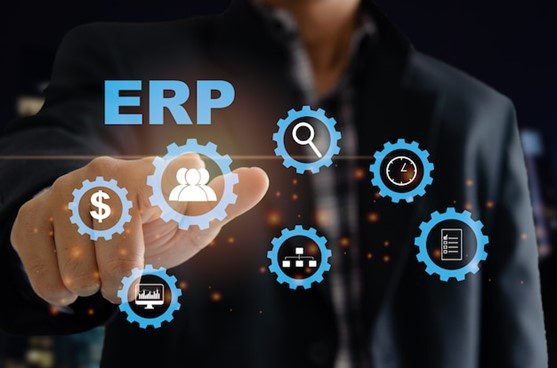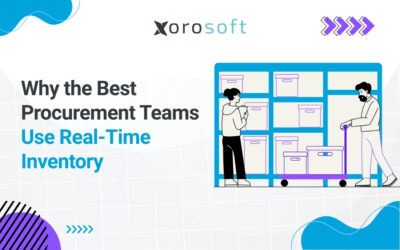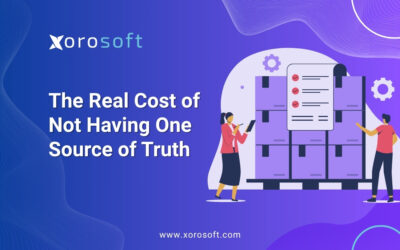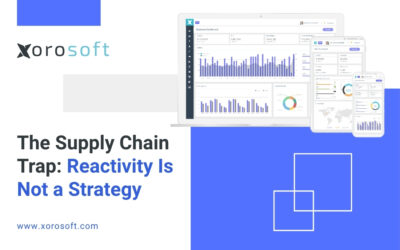
Introduction to ERP Systems
In today’s fast-paced business environment, organizations are constantly seeking ways to improve efficiency, increase productivity, and streamline operations. One powerful tool that has been proven to achieve these goals is an Enterprise Resource Planning (ERP) system. An ERP system is a comprehensive software solution that integrates and manages core business processes, enabling businesses to operate more effectively and strategically.
Benefits of Implementing an ERP System
Implementing an ERP system offers numerous benefits for businesses of all sizes and industries. Firstly, it provides a centralized database that allows for real-time visibility into various aspects of the business, such as sales, inventory, and customer information. This allows for better decision-making and enables businesses to respond quickly to changing market conditions.
Secondly, an ERP system automates and streamlines business processes, reducing the need for manual data entry and minimizing the risk of errors. This not only saves time but also improves the accuracy and reliability of the data, which is crucial for making informed business decisions.
Additionally, an ERP system improves collaboration and communication within the organization by providing a single platform for employees to access and share information. This leads to increased efficiency and productivity as employees can easily collaborate on projects, track progress, and share important documents.
Common Features of ERP Systems
ERP systems typically include a wide range of features and modules that cater to different aspects of a business. Some common features include:
-
Inventory Management: An ERP system provides businesses with a comprehensive inventory management system that allows for real-time tracking of inventory levels, streamlines the procurement process, and optimizes inventory control.
-
Accounting: ERP systems include robust accounting functionalities that automate financial processes, such as accounts payable, accounts receivable, general ledger, and financial reporting. This ensures accurate and timely financial information, simplifies auditing, and improves cash flow management.
-
Human Resources: ERP systems often include modules for managing human resources, such as employee records, payroll, benefits administration, and performance management. This streamlines HR processes, improves employee satisfaction, and facilitates compliance with labor regulations.
-
Customer Relationship Management: An ERP system integrates customer relationship management (CRM) functionalities, enabling businesses to effectively manage customer interactions, track sales leads, and provide exceptional customer service.
Xorosoft ERP: An Overview of the Leading ERP Solution
One of the leading ERP solutions in the market is Xorosoft ERP. Xorosoft ERP is a comprehensive and customizable software solution that caters to businesses of all sizes and industries. It offers a wide range of features and functionalities that help businesses streamline operations, increase productivity, and drive growth.
Xorosoft ERP provides businesses with a centralized database that allows for real-time visibility into key business metrics, such as sales, inventory, and financial performance. This enables businesses to make data-driven decisions and respond quickly to market changes.
Moreover, Xorosoft ERP includes modules for inventory management, accounting, human resources, and customer relationship management, providing businesses with an all-in-one solution to manage their core processes. The system is highly flexible and can be tailored to meet the specific needs of each business, ensuring maximum efficiency and effectiveness.
How ERP Systems Transform Businesses
Implementing an ERP system can have a transformative impact on businesses. Firstly, it improves inventory management by providing real-time visibility into inventory levels, automating reorder processes, and optimizing inventory control. This ensures that businesses have the right products in stock at the right time, reducing stockouts and improving customer satisfaction.
Secondly, ERP systems streamline accounting processes by automating financial processes, such as invoicing, accounts payable, and financial reporting. This not only saves time but also improves accuracy and reduces the risk of errors. Businesses can generate financial reports with ease, enabling them to analyze their financial performance and make data-driven decisions.
Furthermore, ERP systems facilitate better decision-making by providing businesses with real-time data and analytics. With accurate and up-to-date information at their fingertips, businesses can identify trends, spot opportunities, and mitigate risks. This leads to more informed decision-making and ultimately drives business growth.
Improving Inventory Management with an ERP System
Inventory management is a critical aspect of any business, regardless of its size or industry. An ERP system plays a crucial role in improving inventory management by providing real-time visibility into inventory levels, automating reorder processes, and optimizing inventory control.
With an ERP system, businesses can easily track inventory levels across multiple locations in real-time. This allows for better inventory planning and ensures that businesses have the right products in stock at the right time. Moreover, an ERP system can automatically generate purchase orders when inventory levels reach a specified threshold, streamlining the procurement process and reducing the risk of stockouts.
Furthermore, an ERP system enables businesses to optimize inventory control by providing insights into inventory turnover rates, carrying costs, and demand patterns. By analyzing this data, businesses can identify slow-moving items, reduce excess inventory, and improve cash flow. This not only saves costs but also improves customer satisfaction as businesses can fulfill orders more efficiently.
In conclusion, implementing an ERP system can significantly improve inventory management by providing real-time visibility, automating reorder processes, and optimizing inventory control. Businesses can streamline their operations, reduce costs, and improve customer satisfaction, ultimately driving growth and success.
Streamlining Accounting Processes with an ERP System
Accounting is a critical function for businesses as it involves managing financial transactions, generating financial reports, and ensuring compliance with regulations. However, manual accounting processes can be time-consuming, prone to errors, and inefficient. An ERP system streamlines accounting processes by automating financial tasks, improving accuracy, and saving time.
An ERP system automates the invoicing process by generating invoices based on predefined templates and rules. This eliminates the need for manual data entry and reduces the risk of errors. Businesses can also automate accounts payable and accounts receivable processes, ensuring timely payments and improving cash flow management.
Moreover, an ERP system provides businesses with real-time financial data and reporting capabilities. Financial reports can be generated with a few clicks, providing businesses with insights into their financial performance, profitability, and cash flow. This enables businesses to make informed decisions, identify areas for improvement, and drive growth.
Furthermore, an ERP system facilitates compliance with financial regulations by ensuring accurate and complete financial records. The system can generate audit trails, track changes to financial data, and provide secure access controls. This simplifies auditing processes and reduces the risk of non-compliance.
In conclusion, implementing an ERP system streamlines accounting processes by automating tasks, improving accuracy, and providing real-time financial data. Businesses can save time, reduce errors, and make informed decisions based on accurate financial information. This ultimately leads to improved financial management and business success.
Xorosoft ERP: Key Features and Functionalities
Xorosoft ERP is a powerful software solution that offers a wide range of features and functionalities to help businesses streamline their operations, increase productivity, and drive growth. Some key features of Xorosoft ERP include:
-
Inventory Management: Xorosoft ERP provides businesses with a comprehensive inventory management system that allows for real-time tracking of inventory levels, automates reorder processes, and optimizes inventory control. Businesses can easily manage stock across multiple locations and ensure that they have the right products in stock at the right time.
-
Accounting: Xorosoft ERP includes robust accounting functionalities that automate financial processes, such as invoicing, accounts payable, accounts receivable, and financial reporting. Businesses can generate accurate and timely financial reports, improve cash flow management, and ensure compliance with financial regulations.
-
Human Resources: Xorosoft ERP includes modules for managing human resources, such as employee records, payroll, benefits administration, and performance management. This streamlines HR processes, improves employee satisfaction, and facilitates compliance with labor regulations.
-
Customer Relationship Management: Xorosoft ERP integrates customer relationship management (CRM) functionalities, enabling businesses to effectively manage customer interactions, track sales leads, and provide exceptional customer service. Businesses can build stronger relationships with customers, increase sales, and enhance customer satisfaction.
In addition to these features, Xorosoft ERP offers a user-friendly interface, customizable dashboards, and robust reporting capabilities. The system is highly flexible and can be tailored to meet the specific needs of each business, ensuring maximum efficiency and effectiveness.
Choosing the Right ERP System for Your Business
Choosing the right ERP system for your business is a crucial decision that requires careful consideration. With a wide range of options available in the market, businesses need to assess their specific needs, budget, and long-term goals to select the most suitable ERP system.
Firstly, businesses should identify their key requirements and pain points. This involves assessing the existing business processes, identifying areas for improvement, and defining the desired outcomes. For example, a business may prioritize inventory management, accounting, or customer relationship management.
Secondly, businesses should consider their budget and resources. ERP systems vary in terms of cost, implementation time, and ongoing maintenance. It is important to assess the total cost of ownership, including licensing fees, implementation costs, hardware requirements, and support services.
Thirdly, businesses should evaluate the scalability and flexibility of the ERP system. As businesses grow and evolve, their needs may change. It is important to select an ERP system that can accommodate future growth and can be easily customized to meet changing business requirements.
Lastly, businesses should consider the reputation and track record of the ERP vendor. It is important to choose a reputable vendor that has extensive experience in the industry, offers excellent customer support, and has a proven track record of successful implementations.
In conclusion, choosing the right ERP system is a critical decision that requires careful assessment of business needs, budget, and long-term goals. By selecting the most suitable ERP system, businesses can streamline their operations, increase productivity, and drive growth.
Implementation and Integration Considerations for ERP Systems
Implementing an ERP system involves careful planning, project management, and coordination. It is a complex process that requires collaboration between the ERP vendor, internal IT team, and key stakeholders. There are several key considerations to keep in mind during the implementation and integration of an ERP system.
Firstly, businesses should define clear objectives and expectations for the ERP implementation. This involves setting specific goals, outlining the desired outcomes, and establishing key performance indicators. Clear objectives help to align the implementation process with the overall business strategy and ensure that the ERP system delivers the expected benefits.
Secondly, businesses should allocate sufficient resources for the implementation process. This includes allocating dedicated IT personnel, providing training for employees, and ensuring that the necessary hardware and infrastructure are in place. Adequate resources are crucial for a successful implementation and smooth integration of the ERP system.
Thirdly, businesses should carefully plan the data migration process. Data migration involves transferring data from the existing systems to the new ERP system. It is important to ensure that the data is accurate, complete, and properly formatted. Businesses should also consider data cleansing and data validation processes to improve data quality.
Furthermore, businesses should prioritize change management and employee training. Implementing an ERP system often requires changes to existing business processes and workflows. It is important to communicate these changes effectively, involve employees in the process, and provide comprehensive training to ensure a smooth transition.
Lastly, businesses should consider ongoing support and maintenance for the ERP system. This includes regular system updates, troubleshooting, and user support. It is important to have a dedicated support team or engage with the ERP vendor to ensure that the system operates smoothly and any issues are resolved promptly.
In conclusion, implementing an ERP system requires careful planning, coordination, and consideration of various factors. By defining clear objectives, allocating sufficient resources, planning data migration, prioritizing change management, and ensuring ongoing support, businesses can successfully implement and integrate an ERP system.
Maximizing Employee Productivity with an ERP System
Employee productivity is a key factor in the success of any business. An ERP system can play a crucial role in maximizing employee productivity by automating tasks, streamlining processes, and providing real-time access to information.
Firstly, an ERP system automates repetitive and time-consuming tasks, allowing employees to focus on more strategic and value-added activities. For example, the system can automatically generate invoices, process payroll, and track inventory levels. This saves time, reduces errors, and improves efficiency.
Secondly, an ERP system streamlines business processes by eliminating manual data entry and integrating different functions within the organization. This improves collaboration and communication between employees, reduces duplication of efforts, and ensures that everyone has access to the same up-to-date information. Employees can easily collaborate on projects, track progress, and share important documents, leading to increased productivity and efficiency.
Furthermore, an ERP system provides real-time access to information, enabling employees to make informed decisions quickly. For example, sales representatives can access real-time customer data, track sales leads, and provide accurate quotes to customers. This improves customer service, increases sales, and enhances overall productivity.
In addition, an ERP system provides robust reporting capabilities, allowing employees to generate customized reports and analyze data easily. This helps employees identify trends, spot opportunities, and make data-driven decisions. By having access to accurate and up-to-date information, employees can work more efficiently and effectively.
In conclusion, an ERP system can significantly maximize employee productivity by automating tasks, streamlining processes, and providing real-time access to information. By eliminating manual work, improving collaboration, and enabling data-driven decision-making, businesses can achieve higher levels of productivity and drive growth.
ERP System training and support services
To ensure smooth adoption and optimal utilization of an ERP system, businesses should invest in comprehensive training and support services. Xorosoft ERP offers training programs tailored to the specific needs of businesses, ensuring that employees are equipped with the necessary skills to maximize the benefits of the system. Additionally, Xorosoft provides ongoing support services, including regular updates and troubleshooting assistance, to ensure the smooth operation of the ERP system.
Conclusion
In conclusion, ERP systems have the power to transform businesses by streamlining operations, enhancing collaboration, and unlocking employee productivity. By implementing an ERP system, businesses can optimize inventory management, streamline accounting processes, and improve overall operational efficiency. Xorosoft ERP stands out as a leading ERP solution, offering a comprehensive suite of modules and robust functionalities. When choosing an ERP system, businesses should consider factors such as scalability, ease of use, and vendor support. Successful implementation requires careful planning, data migration, and change management strategies. By maximizing employee productivity through automation, real-time data access, and improved collaboration, businesses can unlock their full potential and achieve sustainable growth. Book a Demo with Xorosoft today to witness the transformative power of ERP systems firsthand.









